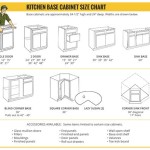When it comes to choosing the right flooring for your kitchen, there are many options available. Different materials, different colors, different designs, and different installation methods all come into play. Installing kitchen flooring is not a job to take lightly, and it is important to understand the options available and the techniques used to properly install the flooring of your choice. In this article, we will discuss the tips, techniques, and considerations that should be taken into account when installing kitchen flooring.
Types of Kitchen Flooring
When it comes to kitchen flooring, there are several different types to choose from. The most popular types of kitchen flooring are tile, laminate, hardwood, linoleum, and vinyl. Each type of flooring has its own advantages and disadvantages, and it is important to consider the pros and cons of each type when deciding which is best for your kitchen.
Tile Flooring
Tile flooring is a great option for kitchens because it is durable, easy to clean, and comes in a variety of colors, designs, and sizes. Tile flooring can also be installed relatively easily with the use of a few simple tools. The downside to tile flooring is that it can be expensive and it can be difficult to install correctly.
Laminate Flooring
Laminate flooring is a great option for kitchens because it is inexpensive, easy to install, and comes in a variety of colors and designs. The downside to laminate flooring is that it is not as durable as tile or hardwood, and it can be difficult to repair if it is damaged.
Hardwood Flooring
Hardwood flooring is a great option for kitchens because it is beautiful and durable. The downside to hardwood flooring is that it can be expensive and difficult to install correctly.
Linoleum Flooring
Linoleum flooring is a great option for kitchens because it is inexpensive and easy to install. The downside to linoleum flooring is that it is not as durable as tile or hardwood, and it is not as attractive as other types of flooring.
Vinyl Flooring
Vinyl flooring is a great option for kitchens because it is inexpensive, easy to install, and comes in a variety of colors, designs, and sizes. The downside to vinyl flooring is that it is not as durable as tile or hardwood, and it can be difficult to repair if it is damaged.
Installing Kitchen Flooring
When it comes to installing kitchen flooring, there are several different techniques that can be used. Depending on the type of flooring you choose, you may need to use a specific installation method. Here are some of the most common installation techniques used for kitchen flooring:
- Tile Installation – This involves laying the tile in a specific pattern, using a trowel to spread the adhesive, and then grouting the tiles.
- Laminate Installation – This involves laying the laminate flooring over a subfloor, using a jigsaw to cut the planks, and then gluing the planks together.
- Hardwood Installation – This involves sanding the subfloor, laying the hardwood in a specific pattern, and then nailing or stapling the flooring into place.
- Linoleum Installation – This involves laying the linoleum over a subfloor, using a jigsaw to cut the planks, and then gluing the planks together.
- Vinyl Installation – This involves laying the vinyl flooring over a subfloor, using a jigsaw to cut the planks, and then gluing the planks together.
Tips for Installing Kitchen Flooring
When it comes to installing kitchen flooring, there are several tips and techniques that can make the job easier. Here are some tips for installing kitchen flooring:
- Always follow the manufacturer’s instructions when installing any type of kitchen flooring.
- Ensure that the subfloor is level and in good condition before beginning the installation.
- Use a vapor barrier to prevent moisture from seeping through the flooring.
- Use a moisture meter to ensure that the moisture levels in the subfloor are within the acceptable range.
- Always use the right tools for the job.
- Allow the flooring to acclimate to the room before beginning the installation.
Considerations When Installing Kitchen Flooring
When it comes to installing kitchen flooring, there are several considerations that should be taken into account. Here are some considerations when installing kitchen flooring:
- The type of flooring you choose will affect the cost, durability, and installation process.
- The condition of the subfloor and moisture levels in the room must be taken into account when installing any type of flooring.
- The installation process for each type of flooring is different, and it is important to follow the manufacturer’s instructions.
- Tools such as a jigsaw, trowel, and moisture meter are often necessary when installing kitchen flooring.
- The flooring must be allowed to acclimate to the room before beginning the installation.
Installing kitchen flooring is an important job that requires the right knowledge, tools, and techniques. By understanding the different types of flooring available, the techniques used to install them, and the considerations that need to be taken into account, you can ensure that your kitchen flooring is installed correctly and looks great for years to come.













/Man-removing-floor-GettyImages-200467183-001-b20da3c5e3884f0ea2b171a20a8de124.jpg)

Related Posts








